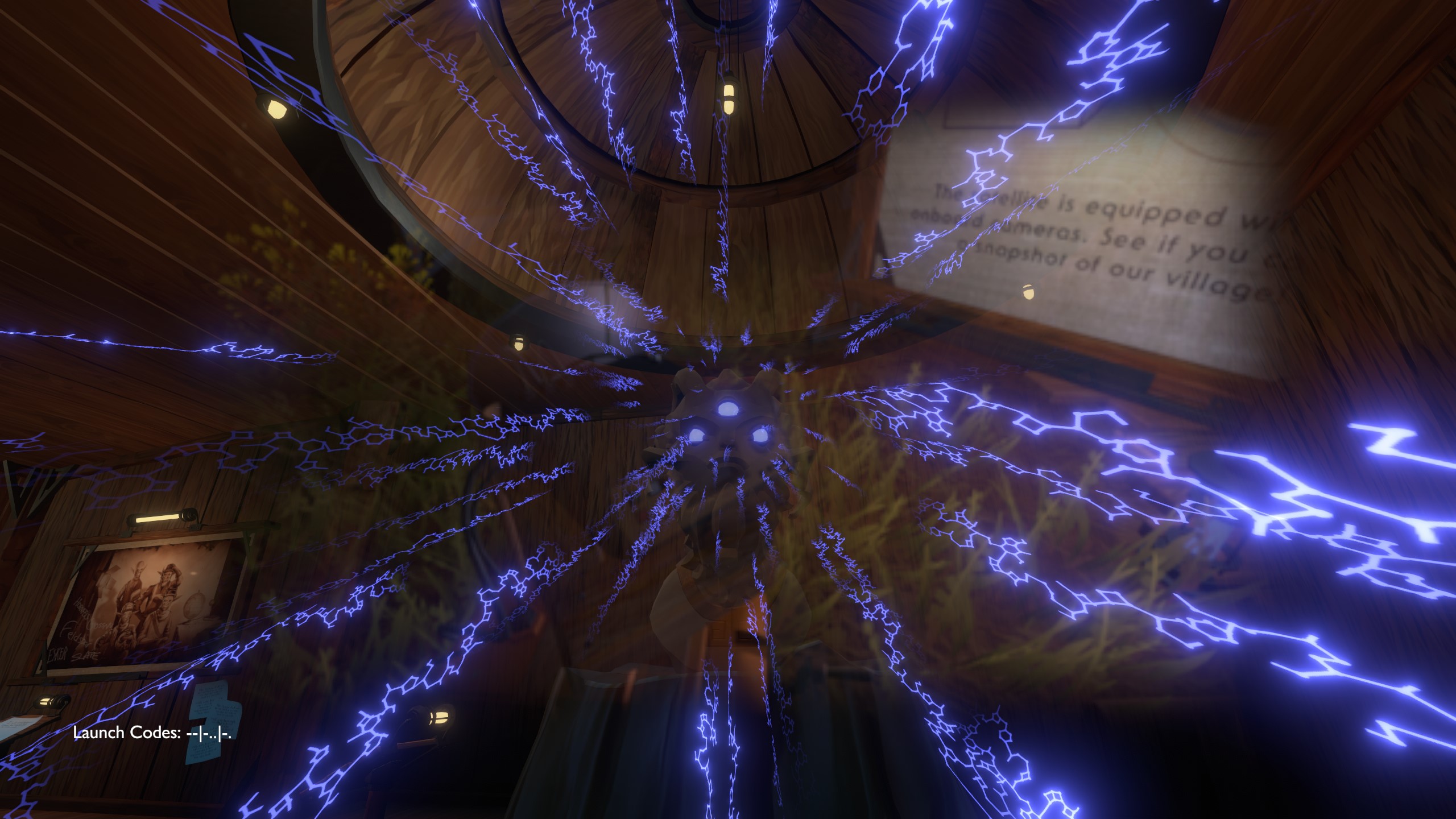Outer Wilds:
Outer Wilds: Lift Off, Stage One, Stage Two
Outer Wilds: Stage Three, and Landing
Time To Beat: 22 Hours
Searching for games to play is a careful balancing act. I want to ensure I'll enjoy it, without learning too much and spoiling the game. I don't read detailed reviews and I don't watch YouTube videos. This prohibition occasionally causes me to enter a game blind to its purpose. I place a game on the Steam wishlist, forget about it, buy it a year later, and enter without any expectations. For the first ten minutes of Outer Wilds, the debut game by Mobius Digital (2019), I didn't even know what genre it was.
The unnamed protagonist comes to consciousness at night by a campfire. An alien looking creature, claiming to be a friend, tells the protagonist that they are a space pilot, and today is the day of their first flight. A jaunt into town to retrieve the flight access codes reveals more strange creatures, a ramshackle construction, and a bunch of silly mini-games. The town, the people, the woods, made with the Unity Engine, don't look impressive. They appear off, flat and too cartoony. The city, which boasts only a dozen or so inhabitants, feels artificial, like a mock town in a Western movie, with just the building fronts. Each member of the village exists solely to teach the player the use of a tool or mechanic. The player reads the dialogue. Outer Wilds has no spoken audio. If the developer had demanded one more minute of my time before entering the spaceship, I probably would have quit. Like a rocket, I experienced Outer Wilds in stages, and the first was certainly hate.
But once in space! Wow! It's a
wondrous mini solar system. The player can travel anywhere, any
time, and explore any of the ten (more or less depending on how you
define them) solar bodies. The only limit on the player is
knowledge, or a lack of.
Upon death the statue recalls the protagonist to their starting point. Outer Wilds uses a visual effect, where the player sees everything they saw that life, but starting at their death, moving backwards, rapidly, like a movie seen on rewind. Enjoyably cool at first, this effect diminishes significantly with dozens of deaths, until I wished I could skip it to try again.
Regardless of a player's
skill, everyone dies eventfully. New players may not realize their
death is inevitable, because they're too busy dying when they stumble
into a cactus-filled pit, but they have, at most, twenty-two minutes
before a fiery death claims them. The sun supernovas. This is the
main gameplay mechanic. Explore the solar system of mini planets,
moons, comet, space stations, and other elements, learning as much as
you can, before the sun wipes out all life. Then come back to life,
and use what you learned, to access new locations and learn more.
To set autopilot the player locks onto a location. That's simple, press on the left joystick (Assuming Xbox controller). The reticle indicates the acceleration relationship to the object and the total distance. The total distance isn't to the surface of the object, but to the center of the object. Maybe this is how astronauts or astronomers think about distance, but it confused me. I'm not concerned about the core of the planet, but the surface, because that's what I want to land on (and avoid crashing into at high velocities).
While most of the game is played from a first person perspective, the spaceship has a landing camera which is useful for tricky terrain. Outer Wilds doesn't offer any purpose for exploring the stars beyond, 1) Go see how the other astronauts are doing, and 2) see if you can learn anything about the Nomai through their ruins. Purpose develops by exploring, interacting with the remains of the Nomai, and dying every twenty-two minutes. Even then, Outer Wilds never holds the player's hand. It never says what to do, though it does tell the player how to do stuff. This initial exploration is stage two of the Outer Wilds rocket, and it made me fall in love with the game.
One of the first objectives I made for myself, once I realized that dying was no big deal, was; is it possible to leap from the Attlerock to Timber Hearth in just the spacesuit, no ship? Attlerock is the moon of Timber Hearth. The first attempt; no. Then I was distracted by some other incredible object of the solar system. But before I beat the game I came back, and the answer then was; yes. And it felt pretty easy too, with the experience I had gained.
Part of what made the jump possible was the equipment. Inside the ship is a spacesuit. The player can only put it on, and take it off, on the ship. It carries six minutes of oxygen and a jetpack. The jetpack carries a limited amount of fuel. If it runs out, the suit uses oxygen as fuel. Both the jetpack and the spaceship can move in any direction with their thrusters. Up, down, left, right, forward, back, and diagonally. Both also have a useful “Match Velocity” feature. This allows the player to stay in place relative to their locked on object.
The player also wields a signal-scope to locate specific sound frequencies, a translation tool for reading Nomai script, and a scout launcher. The last fires a mobile camera to look at distant objects.
Next week, the third and fourth stage of Outer Wilds.
Recent:
The Presidential Events: December 2021Relevant:
Life Is Strange: An IntroductionThe Last Express: A New Trip on an Old Ride




Comments
Post a Comment